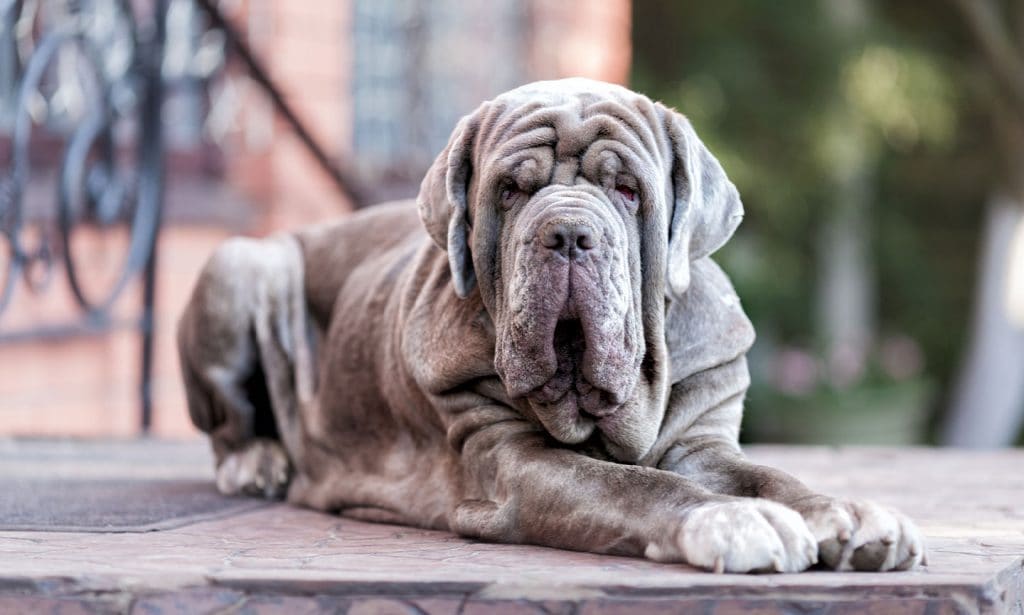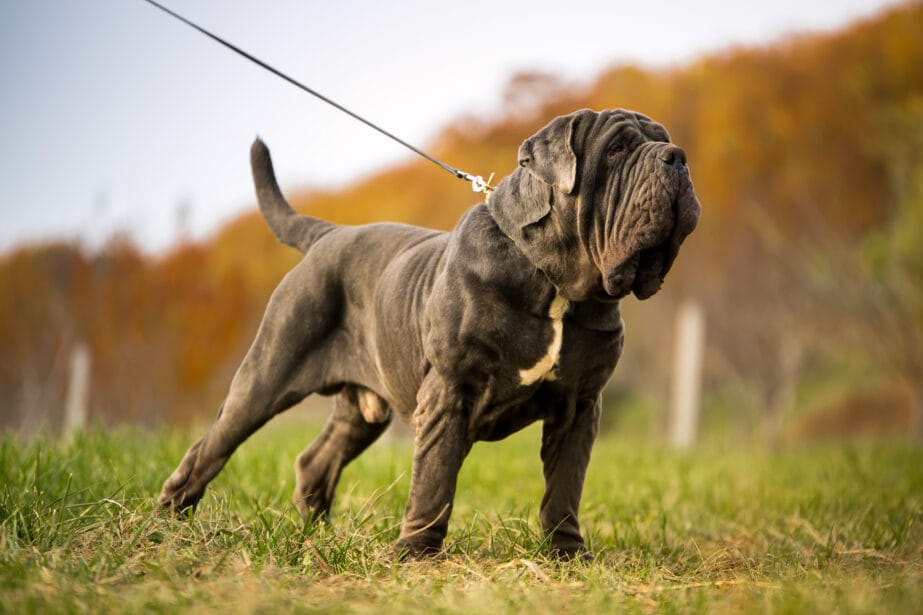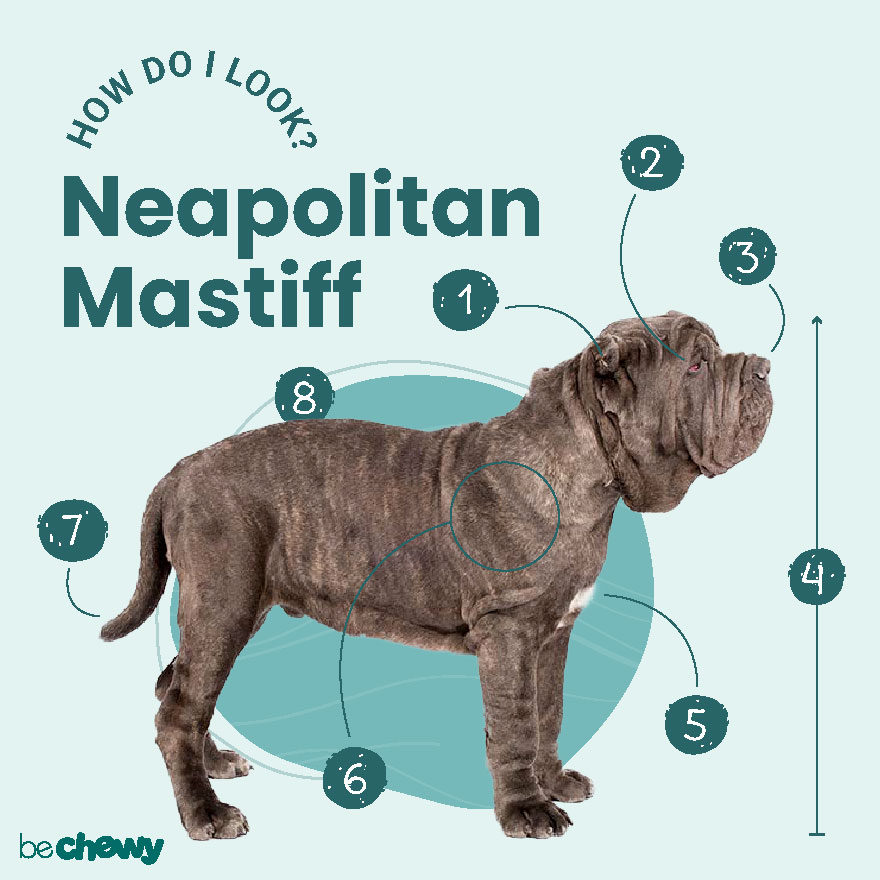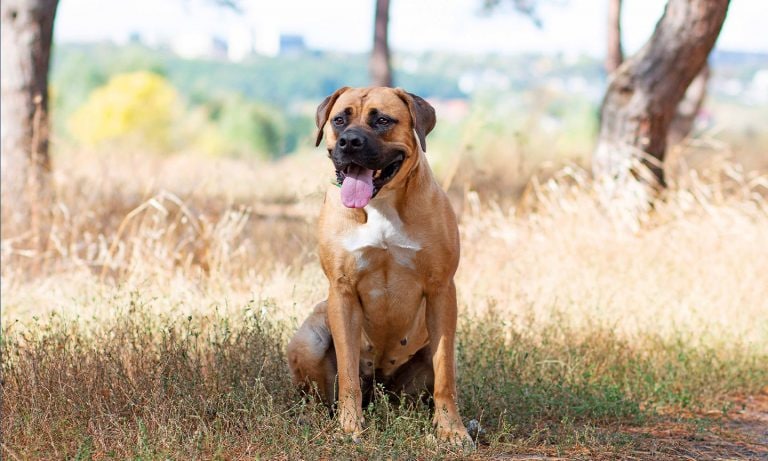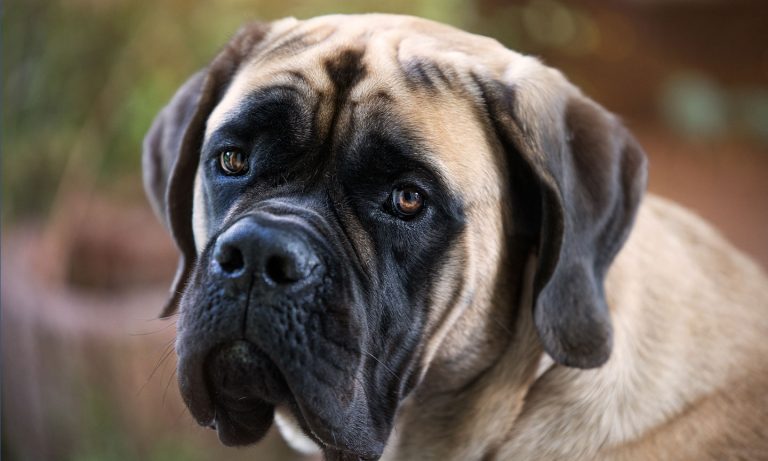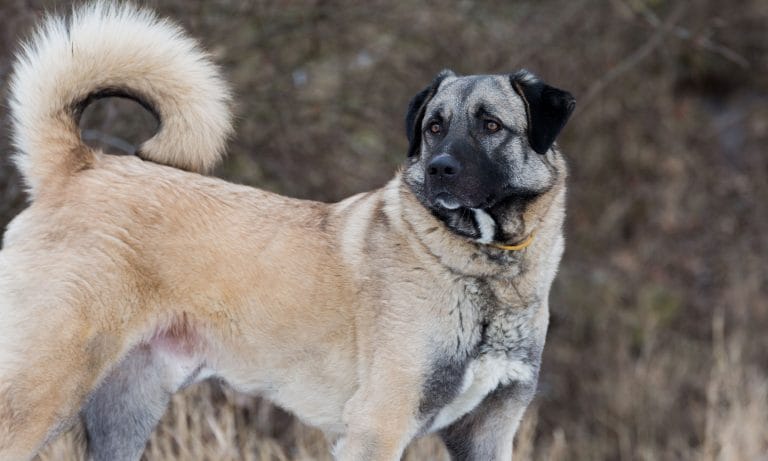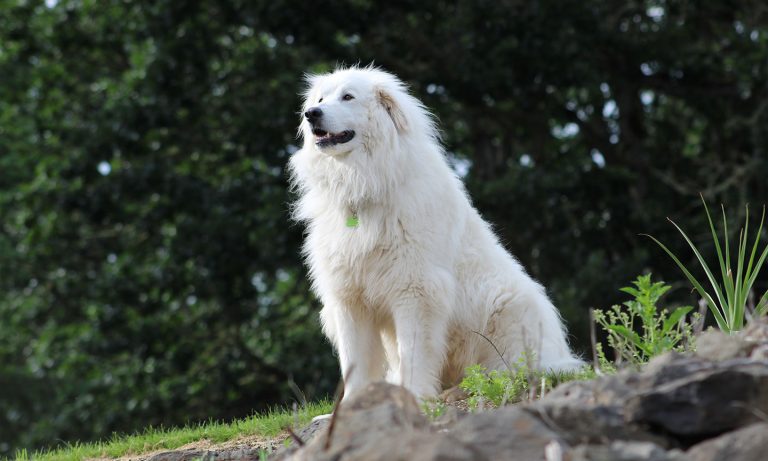When you first look at a Neapolitan Mastiff, you might think, “How wrinkly! How… HUGE!” And you’re not wrong. Neos (as they’re affectionately called) were originally bred to guard their homes—something they’re capable of doing with a look and a (deep) bark. But these extra-large pups are more than their massive build—they love their families unconditionally. They often show that love with drooly kisses… and they may try to crawl into your lap.
Breed Snapshot
Temperament:
LovingChillGentleCoat Color:
BlueBlackMahoganyTawny
Best For
With their giant size, it's no surprise that Neapolitan Mastiffs were originally trained as guard dogs. Today, these pups have a chill, homebody vibe—as long as there's enough space for them at home. Give them regular exercise and early socialization and you'll have a loyal pal for life.
Neapolitan Mastiff Temperament
Neapolitan Mastiff dogs (aka Mastinos or Neos) love their families. Despite their extra-large size, you may find your gentle giant trying to snuggle up on your lap! And these lumbering pups do well as playmates with children. Just keep an eye on extra-small kids; even though Neos aren’t as active as Border Collies, they may knock over a toddler accidentally due to their sheer size.
Neos are wary of newcomers, but they are rarely reactive. Still, their massive size and deep, throaty bark are usually enough to keep unwanted visitors at bay. Early socialization is important to help teach them the difference between friends and foes.
Neos may not naturally get along with other dogs, so proper introductions and lots of socialization are key if you’re adding them to an existing pack. They may do OK with a family cat if raised with them through puppyhood, but some Neos will chase cats.
Mastino puppies are energetic and playful. As adults, they’re the ultimate couch potatoes and live to lounge near their people.
How to Care for a Neapolitan Mastiff
Caring for a Neapolitan Mastiff isn’t as time-consuming as they may appear. This chill dog doesn’t need a lot of exercise or grooming—but pay attention their skin folds to prevent infection and keep a towel to clean up their drooling. The bulk of your time will be spent in training this powerful, large-breed pooch.
Neapolitan Mastiff Health
The Neapolitan Mastiff has a life expectancy of 7 to 9 years, and the breed is prone to a lot of health issues. But this shouldn’t stop you from considering this wonderful pup. By knowing what these health issues are, you can help your dog live the longest life possible.
- Cherry Eye: Dogs have three eyelids. The third eyelid has a gland that contributes to tear production called the nictitans gland. This gland can prolapse, appearing as a pink fleshy tissue at the corner of the eye commonly called “cherry eye”. Typically, surgery is needed to return the gland to its proper place.
- Hip and Elbow Dysplasia: Dysplasia is a hereditary condition in which the joint is malformed and rubs, causing your dog pain, lameness and, eventually, arthritis. Treatments range from weight and exercise management to physical therapy to surgery.
- Facial Fold Infections: The nooks and crannies of your Neo’s folds are a breeding ground for bacteria, which can develop into yeast infections. Keep an eye on folds particularly around the mouth and underbelly while bathing and grooming and contact your vet if irritation develops.
- Gastric Dilatation Volvulus (GDV): GDV (otherwise known as bloat) is a life-threatening, emergency condition in which the stomach fills with gas and twists on itself. To help protect your pup from GDV, feed them smaller meals throughout the day with a slow feeding bowl and wait an hour before and after mealtimes before exercising.
- Dilated Cardiomyopathy (DCM): This inherited heart condition causes the heart to become enlarged resulting in thin and weakened heart muscle. This can lead to heart failure. Daily medication is the likely course of treatment.
Neapolitan Mastiff History
The Neapolitan Mastiff’s history dates back to Ancient Rome (and maybe as far as 700 B.C.), where their ancestors’ strength and girth made them ideal war dogs, gladiators and guards of hearth and home. These original pups (the Molossus) were later bred to be more family-friendly, and the Neapolitan Mastiff came to be. (They are named for Naples, where they originated.)
By the 1940s, Neapolitan Mastiffs were nearly extinct, but thanks to a concerted effort by Italian breeders, the Neapolitan Mastiff Renaissance was born. Also known as Neos or Mastinos, Neapolitan Mastiffs were recognized by the American Kennel Club in 2004, and included in the Working group, aka the group of dogs bred for a specific job, like guarding or search and rescue.
Are you looking to add a Mastino to your family? You can find reputable breeders on the AKC website. Neapolitan Mastiff puppies cost about $1,500 to $2,500 but can exceed $5,000, depending on the lineage. But for that price, you’re likely getting a pup who’s been screened for health and temperament issues and may come with pedigree papers. If you’d like to adopt a pup, connect with a Neapolitan Rescue organization or look out for the breed at your local shelter. Search Chewy’s database of adoptable dogs in your area.
FAQs
What is the difference between a Neapolitan and an English Mastiff?
Neapolitan Mastiffs and English Mastiffs are different breeds. While they share an ancestor, English Mastiffs are taller and heavier than Neapolitans. Mastinos are stockier in build and are distinguished by their wrinkly, drooping folds of skin.
Do Neapolitan Mastiffs shed?
Yes, Neapolitan Mastiffs shed moderately, so don’t put your vacuum away for too long!
How big do Neapolitan Mastiffs get?
Neapolitan Mastiffs get very big! They can get up to 31 inches tall at the shoulder and weigh 150 pounds.
Are Neapolitan Mastiffs good guard dogs?
Neapolitan Mastiffs can be trained to be good guard dogs. The Romans bred these dogs to use as war dogs, gladiators and guard dogs. Their large build and deep, loud bark make them ideal for guard duty.
What are the most common Neapolitan Mastiff mixes?
- Neapolitan Mastiff-Pit Bull mix (Pitbull Mastiff)
- Neapolitan Mastiff-Great Dane mix (Neo Daniff)
- Neapolitan Mastiff-Cane Corso mix (Neo Corso)
- Neapolitan Mastiff-American Bulldog mix (American Neo Bull)
- Neapolitan Mastiff-German Shepherd mix (German Shepherd Mastiff)
Note: These are not purebred dogs but mixed breeds.

Top Takeaways
Neapolitan Mastiffs are ginormous pups ready to curl up by your side. When properly socialized, these gentle giants love nothing more than being with their families. Neos aren’t ideal for super-active people; they’re better suited for leisurely strolls around the neighborhood. These dogs were bred to protect their family and home, and their massive appearance and deep bark are usually enough to keep any would-be intruder at bay.
Expert input provided by veterinarian Dr. Christina Haney, DVM, founder of Alicia Pacific Vet Center in Laguna Niguel, Calif., and certified dog trainer Ali Smith, owner of www.rebarkable.com.
Breed characteristic ratings provided by veterinarian Dr. Sarah J. Wooten, DVM, CVJ, a veterinarian at Sheep Draw Veterinary Hospital in Greeley, Colorado; dog trainer and behavior consultant Irith Bloom, CPDT-KSA, CBCC-KA, CDBC, owner of The Sophisticated Dog, LLC, in Los Angeles; and certified animal behavior consultant Amy Shojai, CABC, in Sherman, Texas.
The health content was medically reviewed by Chewy vets.
Photo credit for “How do I look?” AKC.org

Search for Adoptable Neapolitan Mastiffs Near You
Top Neapolitan Mastiff Names
These are the top Neapolitan Mastiff names as chosen by Chewy's pet parents!
Female Names
- Luna
- Sasha
- Athena
- Millie
- Stella
- Bella
- Frankie
- Blue
- Kratos
- Onyx
Male Names
- Max
- Zeus
- Bruno
- Tank
- Loki
- Dozer
- Leo
- Vito
- Kane
- Fang
Share:
